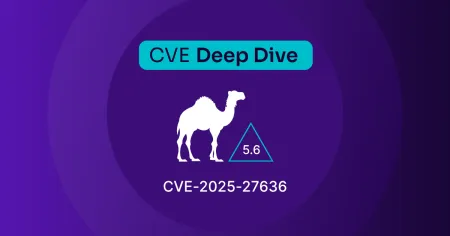
Dec 17, 2022
Web Application Security
In this free guide, OffSec provides 5 essential best practices for web application security, plus many more helpful nuggets of info and advice.
Web Application Security: Is your organization protected?
What if someone was able to access and steal your company’s intellectual property or customer data? These are the types of concerns Chief Information Security Officers lose sleep over. Despite conducting frequent and independent security audits, even the most security focused organizations can remain susceptible to the latest vulnerabilities and attacks. Today, most organizations handle sensitive personal and business data in web-based applications, and as a result, allocating resources towards vulnerability mitigation isn’t a choice anymore, it’s a must.
As more and more organizations transition their business operations to these web applications, security in the development process can no longer be an afterthought. Whether it’s a code injection, privilege escalation, DDoS attack, or a vulnerable element, bad actors are constantly looking for creative ways to manipulate exploits for personal gain. Each hack costs an organization in reputation, time, and money – and customers are increasingly aware of the fallout.
We’ve all put in the work to be secure, but has it been enough?
92% of Web Apps have security weaknesses
If your company has a web app, you need to worry about its security. This isn’t an area to be left to the security analysts or the IT team. Web developers need to take a hand, too. Privacy by design is a good start, but it’s really just the first step.
Hackers will be targeting scripts, file extension filters, cross-site requests, and character restrictions and more. They’ll be looking for ways to bypass restrictions on file uploads, RegEx, and characters. And these vulnerabilities are just the beginning. What measures can be taken to reduce the risk of a hacked web app?
Best Practices for Web Application Security
- Never trust user input: Bad actors will attempt to submit malicious inputs through available entry points. Sanitizing this input against well-thought-out requirements and restrictions is a critical first step.
- Disable unused functionality: If a feature, theme, plugin or service isn’t used by your web application, disable it. Leaving unused functionality available increases the attack surface of an application.
- Conduct regular safety assessments: Contract with an independent firm unfamiliar with your infrastructure and systems. They’ll think differently and test vulnerabilities you might have glossed over.
- Invest in ongoing cybersecurity training: Anyone who works on web apps, including security analysts, software engineers, or web developers should receive training and education to understand how attacks can manipulate code.
- Create a bug bounty program: By offering monetary or other rewards to researchers who privately disclose application vulnerabilities, your team can be ahead of the curve in preventing potential attacks.
White Box: What is it and why is it important?
A penetration tester’s objective is to uncover vulnerabilities in a client system and determine how to exploit them. With web application pentesting, this doesn’t always mean cracking a system from the outside.
Sometimes, the best way to discover how to break in is to start from the inside.
In a traditional web application penetration test, the tester might spend a couple of weeks working to access the client’s systems with no previous knowledge: the black box approach. While black box testing has its place, it usually only manages to scratch the surface. This is particularly true with the limits often imposed by time and scope.
White box web application pentesting offers a different approach. For a comprehensive web app pentest, assessing the source code provides opportunities to go deeper. Many of the more dangerous bugs and vulnerabilities discovered in the field aren’t simple syntax errors or other traditional vulnerabilities. They’re the result of creatively chaining vulnerabilities together into an attack.
A white box approach has a greater chance of uncovering these smaller vulnerabilities within the limits of an engagement.
Advanced Web Attacks & Exploitation Course from OffSec
The AWAE is an advanced web application security review course. Students learn how to:
- Perform a deep analysis of decompiled code
- Identify logical vulnerabilities many scanners aren’t equipped to find
- Exploit vulnerabilities by chaining them to into complex attacks.
Students who complete the course and pass the exam earn the Offensive Security Web Expert (OSWE) certification. Certified OSWEs have a clear and practical understanding of the web application assessment and hacking process. They’ve proven their ability to review advanced source code in web apps, identify vulnerabilities, and exploit them.
Who should take AWAE?
Investing in ongoing cybersecurity training for your team is likely one of the most valuable actions you can take to protect your web application’s security. Anyone who works on the application front, whether they are security analysts, software engineers, or web designers should receive training and education. They need to understand how attacks can manipulate the code they write. Web applications are handling increasing amounts of sensitive personal and business data; as a result, security needs to be top of mind for every employee working on the application.
Job titles where web application security training may be particularly useful include:
- Software engineer
- Web application developer
- Full-stack web developer
- Quality assurance analyst or tester
- Information security analyst or engineer
- Cybersecurity consultant
- Penetration tester
Benefits of AWAE Course from OffSec
TRAIN AND RETAIN
Investing in training is a smart way to develop and retain in-house cybersecurity talent. AWAE offers an invaluable education on the protection of your web application. With the rapidly changing nature of the infosec space, it’s critical that your team receives up-to-date training on the latest attacks
PEACE OF MIND
Trust that your company’s data, reputation, and financial stability are protected because your employees are prepared to take on challenges. They have received training from the experts who defined the standard of excellence in penetration testing training.
Stay in the know: Become an OffSec Insider
Get the latest updates about resources, events & promotions from OffSec!
Latest from OffSec

Research & Tutorials
CVE-2025-27636 – Remote Code Execution in Apache Camel via Case-Sensitive Header Filtering Bypass
Discover the critical Apache Camel vulnerability (CVE-2025-27636) that allows remote code execution via case-sensitive HTTP header manipulation in the exec component. Learn how attackers exploit this flaw and how to mitigate it.
Jul 10, 2025
2 min read

Research & Tutorials
CVE-2025-29306 – Unauthenticated Remote Code Execution in FoxCMS v1.2.5 via Unserialize Injection
Discover details about CVE-2025-29306, a critical RCE vulnerability in FoxCMS 1.2.5. Learn how unsafe use of PHP’s unserialize() function enables remote attackers to execute arbitrary system commands.
Jul 3, 2025
2 min read

Research & Tutorials
CVE-2024-39914 – Unauthenticated Command Injection in FOG Project’s export.php
Discover details about CVE-2024-39914, a critical unauthenticated command injection vulnerability in FOG Project ≤ 1.5.10.34. Learn how attackers can exploit export.php to execute system commands or deploy persistent webshells.
Jun 26, 2025
2 min read